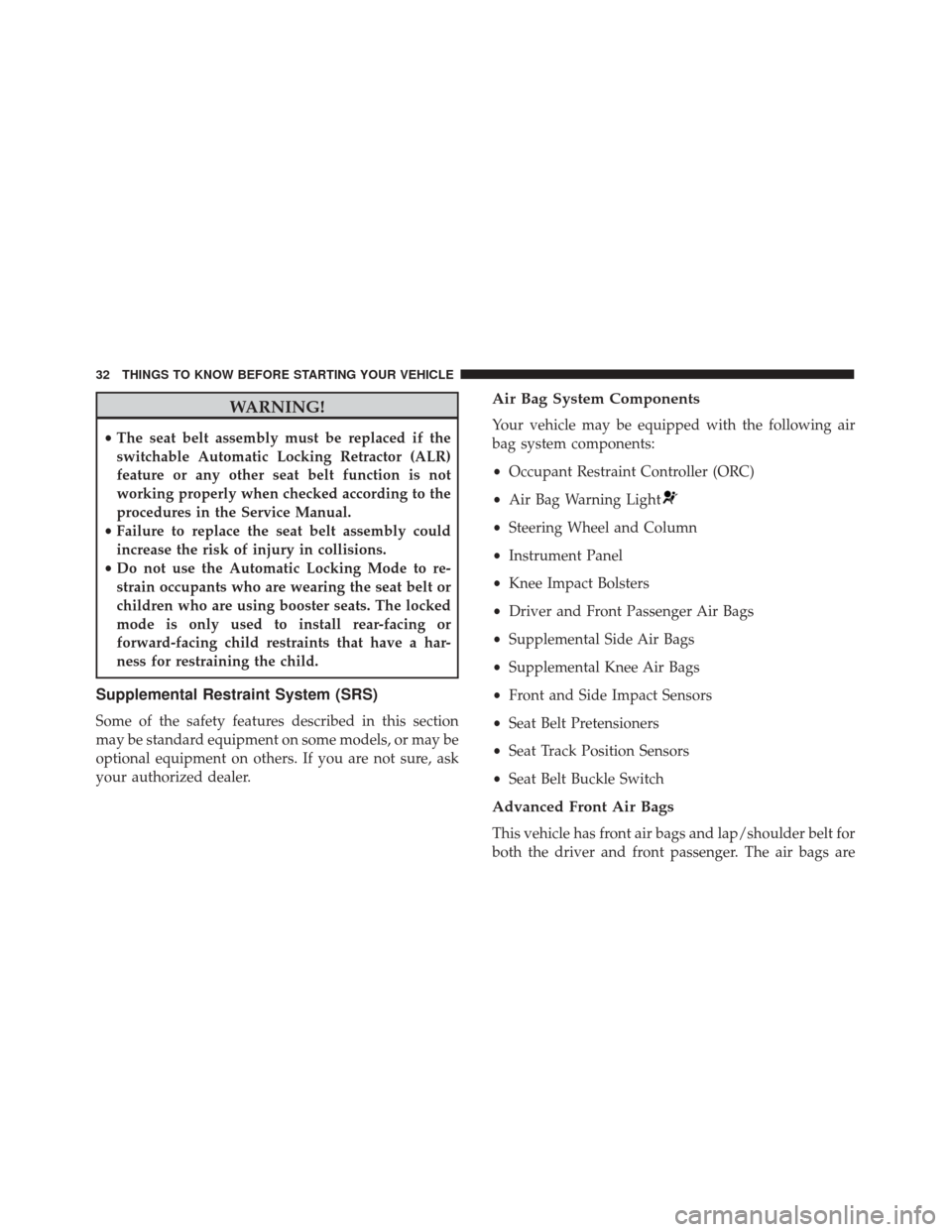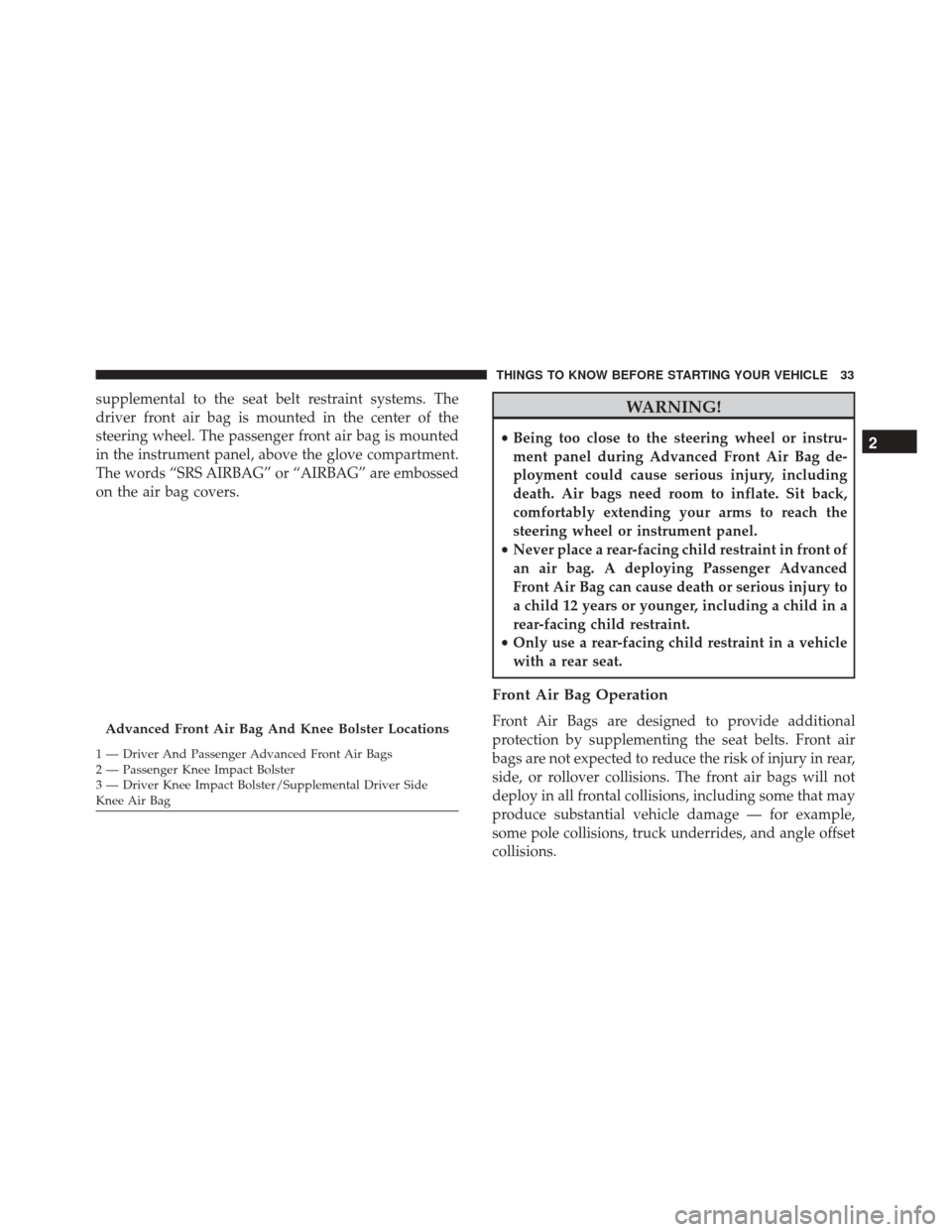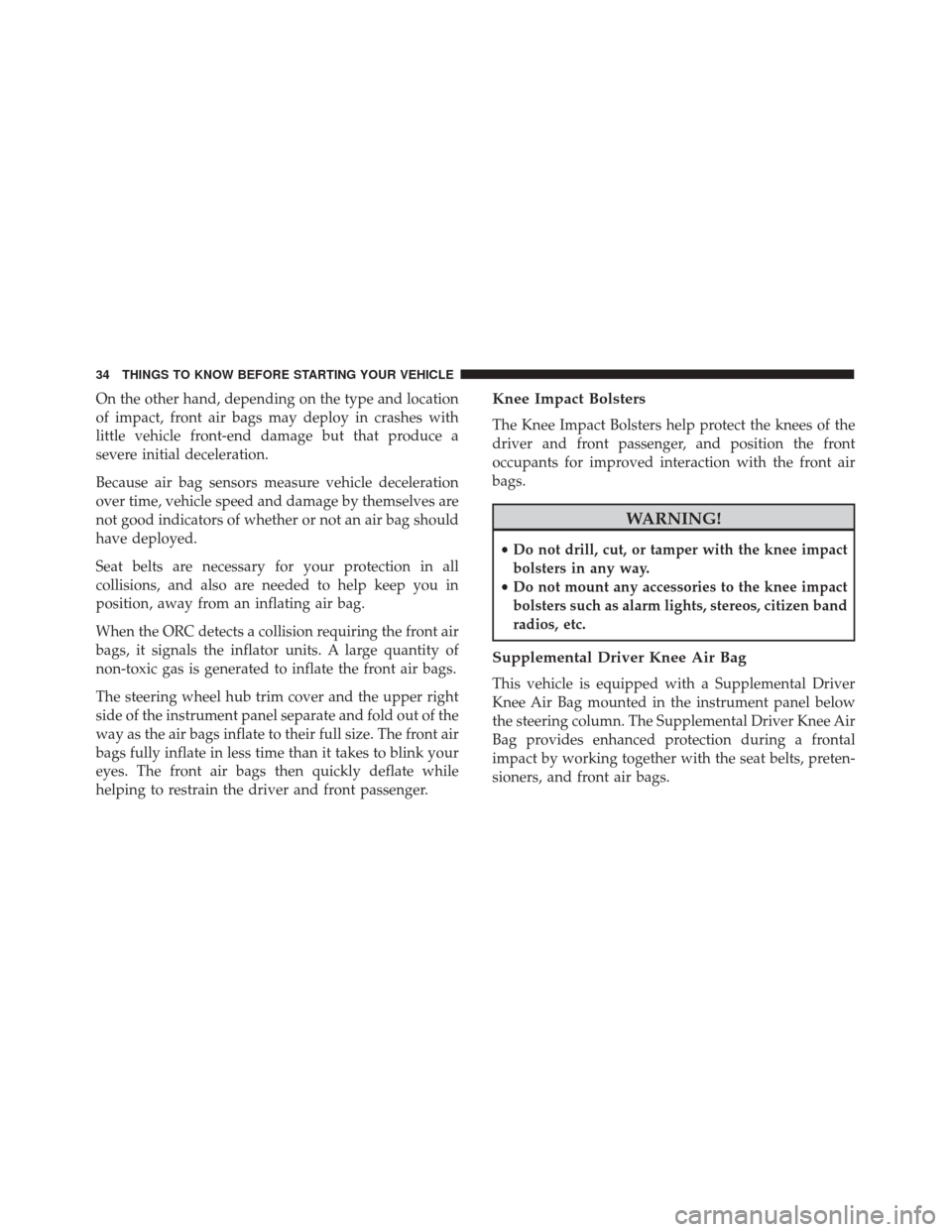Page 3 of 338
TABLE OF CONTENTSSECTIONPAGE
1INTRODUCTION
...............................................................3
2THINGS TO KNOW BEFORE STARTING YOUR VEHICLE
..................................7
3UNDERSTANDING THE FEATURES OF YOUR VEHICLE
..................................65
4UNDERSTANDING YOUR INSTRUMENT PANEL .
.....................................105
5STARTINGANDOPERATING ....................................................181
6WHATTODOINEMERGENCIES .................................................247
7MAINTAININGYOURVEHICLE ..................................................267
8MAINTENANCE SCHEDULES
....................................................311
9IF YOU NEED CONSUMER ASSISTANCE . .
..........................................317
10INDEX .....................................................................323
1
2
3
4
5
6
7
8
9
10
Page 8 of 338
VEHICLE IDENTIFICATION NUMBER
The Vehicle Identification Number (VIN) is found on
the left front corner of the instrument panel, visible
through the windshield. This number also appears
engraved on the right front door sill, under the sill scuff
plate, on an adhesive label applied to the right door
opening on the B-Pillar, on the vehicle registration and
title.NOTE:It is illegal to remove or alter the VIN.
VEHICLE MODIFICATIONS/ALTERATIONS
WARNING!
Any modifications or alterations to this vehicle
could seriously affect its roadworthiness and safety
and may lead to a collision resulting in serious
injury or death.
Vehicle Identification Number
Stamped VIN Location
6 INTRODUCTION
Page 15 of 338

REMOTE KEYLESS ENTRY
This system allows you to lock or unlock the doors and
liftgate from distances up to approximately 66 ft (20 m)
using a hand-held key fob. The key fob does not need to
be pointed at the vehicle to activate the system.
NOTE:The line of transmission must not be blocked
with metal objects.
To Unlock The Doors And Liftgate
Push and release the UNLOCK button on the key fob
once to unlock the driver ’s door or twice, within five
seconds, to unlock all doors and the liftgate. The turn
signal lights will flash to acknowledge the unlock
signal. The illuminated entry system will also turn on.
Remote Key Unlock, Driver Door/All Doors 1st
Press
This feature lets you program the system to unlock
either the driver ’s door or all doors on the first push of
the UNLOCK button on the key fob. To change the
current setting, refer to “Uconnect Settings” in “Under-
standing Your Instrument Panel” for further informa-
tion.
Opening Power Top Remote Function
The remote keyless power top function can only be
used with the engine off.Key Fob
2
THINGS TO KNOW BEFORE STARTING YOUR VEHICLE 13
Page 21 of 338
NOTE:To prevent the key from being locked in the
vehicle, the doors will automatically unlock if the
driver’s door handle is pushed when the key is in the
ignition.Auto Door Locks
When enabled, the door locks will lock automatically
when the vehicles speed exceeds 12 mph (20 km/h).
NOTE: Use the Automatic Door Locks feature in accor-
dance with local laws.
Refer to “Uconnect Settings” in “Understanding Your
Instrument Panel” for further information.
POWER WINDOWS
Power Window Switches
There are single window controls located on the shifter
bezel, below the climate controls, which operate the
driver and passenger door windows. The window
controls will operate when the ignition switch is in the
ON/RUN position.
WARNING!
Never leave children unattended in a vehicle, and
do not let children play with power windows. Do
not leave the key fob in or near the vehicle, or in a
(Continued)
Driver ’s Power Door Lock Handle
2
THINGS TO KNOW BEFORE STARTING YOUR VEHICLE 19
Page 34 of 338

WARNING!
•The seat belt assembly must be replaced if the
switchable Automatic Locking Retractor (ALR)
feature or any other seat belt function is not
working properly when checked according to the
procedures in the Service Manual.
• Failure to replace the seat belt assembly could
increase the risk of injury in collisions.
• Do not use the Automatic Locking Mode to re-
strain occupants who are wearing the seat belt or
children who are using booster seats. The locked
mode is only used to install rear-facing or
forward-facing child restraints that have a har-
ness for restraining the child.
Supplemental Restraint System (SRS)
Some of the safety features described in this section
may be standard equipment on some models, or may be
optional equipment on others. If you are not sure, ask
your authorized dealer.
Air Bag System Components
Your vehicle may be equipped with the following air
bag system components:
• Occupant Restraint Controller (ORC)
• Air Bag Warning Light
•Steering Wheel and Column
• Instrument Panel
• Knee Impact Bolsters
• Driver and Front Passenger Air Bags
• Supplemental Side Air Bags
• Supplemental Knee Air Bags
• Front and Side Impact Sensors
• Seat Belt Pretensioners
• Seat Track Position Sensors
• Seat Belt Buckle Switch
Advanced Front Air Bags
This vehicle has front air bags and lap/shoulder belt for
both the driver and front passenger. The air bags are
32 THINGS TO KNOW BEFORE STARTING YOUR VEHICLE
Page 35 of 338

supplemental to the seat belt restraint systems. The
driver front air bag is mounted in the center of the
steering wheel. The passenger front air bag is mounted
in the instrument panel, above the glove compartment.
The words “SRS AIRBAG” or “AIRBAG” are embossed
on the air bag covers.WARNING!
•Being too close to the steering wheel or instru-
ment panel during Advanced Front Air Bag de-
ployment could cause serious injury, including
death. Air bags need room to inflate. Sit back,
comfortably extending your arms to reach the
steering wheel or instrument panel.
• Never place a rear-facing child restraint in front of
an air bag. A deploying Passenger Advanced
Front Air Bag can cause death or serious injury to
a child 12 years or younger, including a child in a
rear-facing child restraint.
• Only use a rear-facing child restraint in a vehicle
with a rear seat.
Front Air Bag Operation
Front Air Bags are designed to provide additional
protection by supplementing the seat belts. Front air
bags are not expected to reduce the risk of injury in rear,
side, or rollover collisions. The front air bags will not
deploy in all frontal collisions, including some that may
produce substantial vehicle damage — for example,
some pole collisions, truck underrides, and angle offset
collisions.Advanced Front Air Bag And Knee Bolster Locations
1 — Driver And Passenger Advanced Front Air Bags
2 — Passenger Knee Impact Bolster
3 — Driver Knee Impact Bolster/Supplemental Driver Side
Knee Air Bag
2
THINGS TO KNOW BEFORE STARTING YOUR VEHICLE 33
Page 36 of 338

On the other hand, depending on the type and location
of impact, front air bags may deploy in crashes with
little vehicle front-end damage but that produce a
severe initial deceleration.
Because air bag sensors measure vehicle deceleration
over time, vehicle speed and damage by themselves are
not good indicators of whether or not an air bag should
have deployed.
Seat belts are necessary for your protection in all
collisions, and also are needed to help keep you in
position, away from an inflating air bag.
When the ORC detects a collision requiring the front air
bags, it signals the inflator units. A large quantity of
non-toxic gas is generated to inflate the front air bags.
The steering wheel hub trim cover and the upper right
side of the instrument panel separate and fold out of the
way as the air bags inflate to their full size. The front air
bags fully inflate in less time than it takes to blink your
eyes. The front air bags then quickly deflate while
helping to restrain the driver and front passenger.Knee Impact Bolsters
The Knee Impact Bolsters help protect the knees of the
driver and front passenger, and position the front
occupants for improved interaction with the front air
bags.
WARNING!
•Do not drill, cut, or tamper with the knee impact
bolsters in any way.
• Do not mount any accessories to the knee impact
bolsters such as alarm lights, stereos, citizen band
radios, etc.
Supplemental Driver Knee Air Bag
This vehicle is equipped with a Supplemental Driver
Knee Air Bag mounted in the instrument panel below
the steering column. The Supplemental Driver Knee Air
Bag provides enhanced protection during a frontal
impact by working together with the seat belts, preten-
sioners, and front air bags.
34 THINGS TO KNOW BEFORE STARTING YOUR VEHICLE
Page 42 of 338

ignition switch from ignition AVV/START or MAR/
ACC/ON/RUN to ignition STOP/OFF/LOCK. Care-
fully check the vehicle for fuel leaks in the engine
compartment and on the ground near the engine com-
partment and fuel tank before resetting the system and
starting the engine.
Depending on the nature of the event the left and right
turn signal lights, located in the instrument panel, may
both be blinking and will continue to blink. In order to
move your vehicle to the side of the road, you must
follow the system reset procedure.
Customer Action Customer Will See
1. Turn Ignition OFF. (Turn Signal Switch Must Be Placed In Neutral State).
2. Turn Ignition ON. Left Turn Light Is OFF. Right Turn LightBLINKS.
3. Turn Right Turn Sig- nal Switch ON. Right Turn Light Is ON
SOLID. Left Turn Light BLINKS.
Customer Action Customer Will See
4. Turn Left Turn Signal Switch ON. Left Turn Light Is ON
SOLID. Right Turn Sig- nal Light BLINKS.
5. Turn Right Turn Sig- nal Switch ON. Right Turn Light Is ON
SOLID. Left Turn Light BLINKS.
6. Turn Left Turn Signal Switch ON. Left Turn Light Is ON
SOLID. Right Turn Light Is ON SOLID.
7. Turn Left Turn Signal
Switch OFF. (Turn Signal Switch Must Be Placed In Neutral State). Left Turn light Is OFF.
Right Turn Light is OFF.
8. Turn Ignition OFF.
9. Turn Hazard Flashers OFF (Manually). System is now reset and
the engine may be started.
If a reset procedure step is not completed within 60
seconds, then the turn signal lights will blink and the
reset procedure must be performed again in order to be
successful.
40 THINGS TO KNOW BEFORE STARTING YOUR VEHICLE